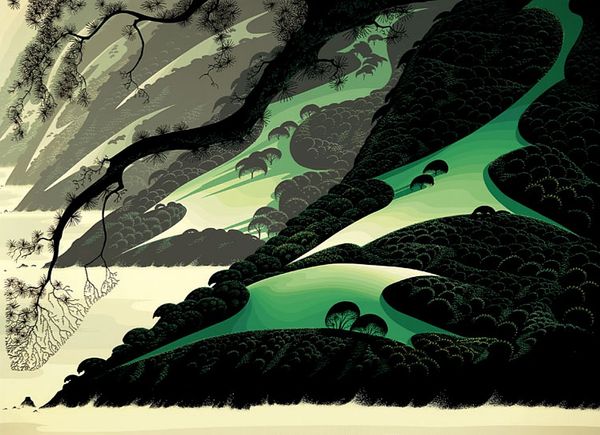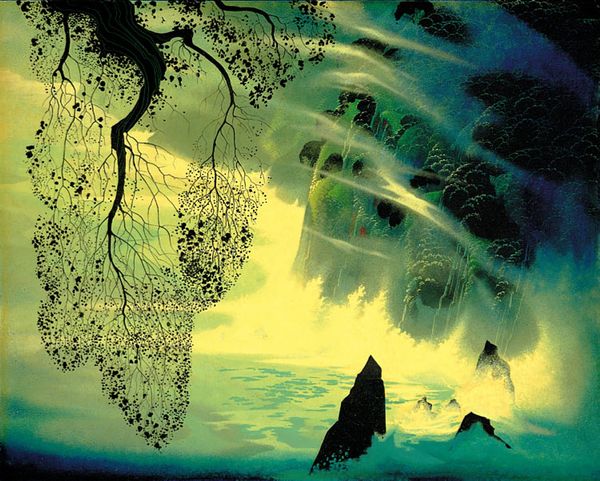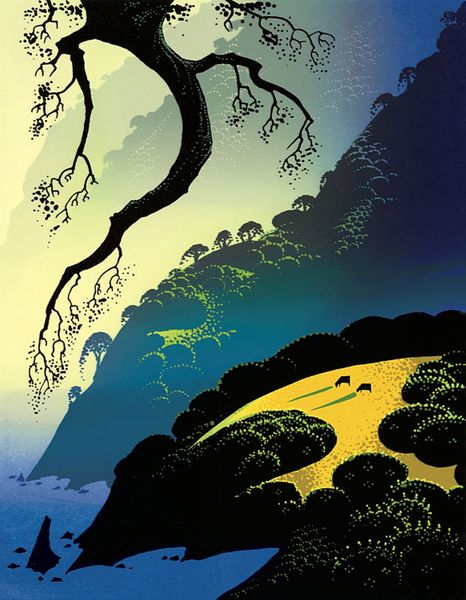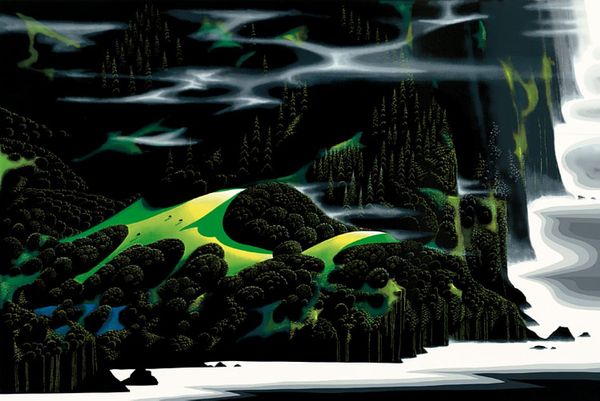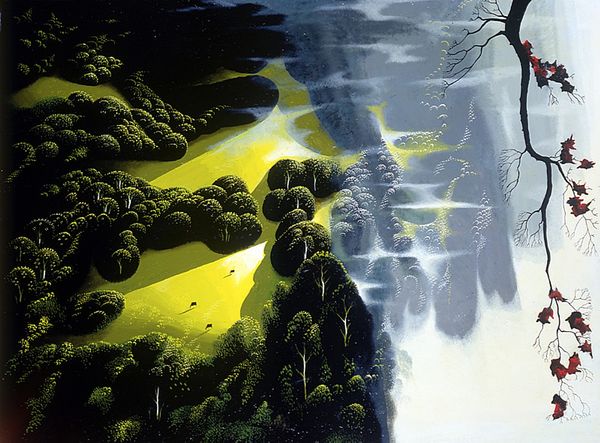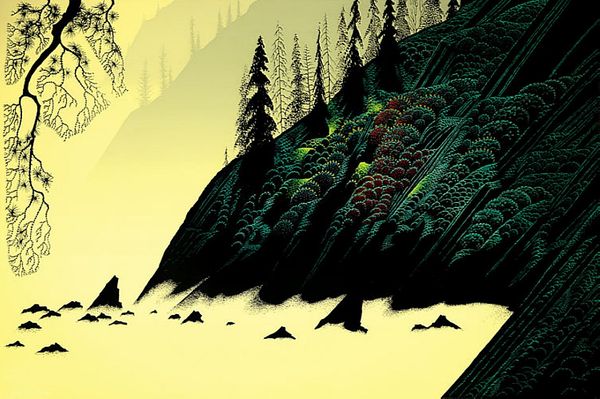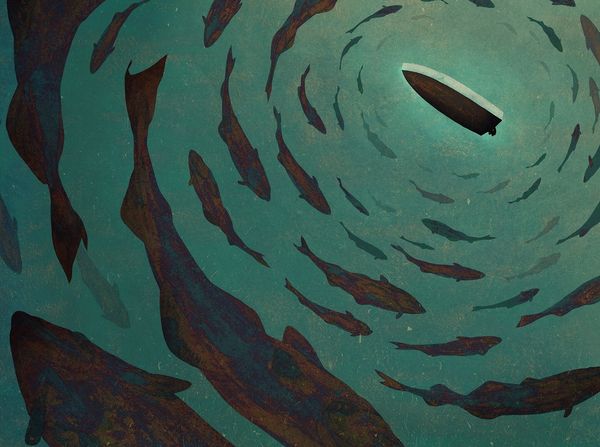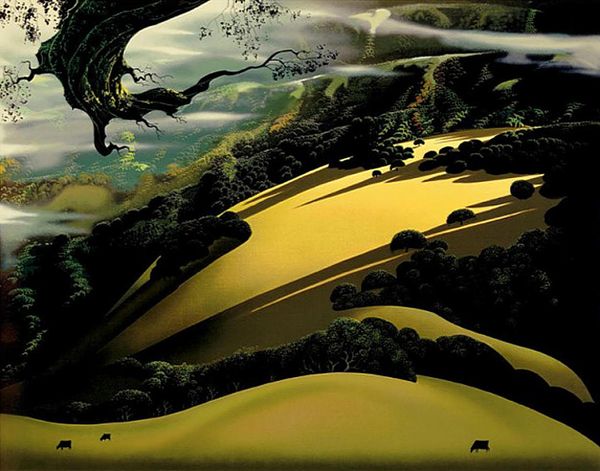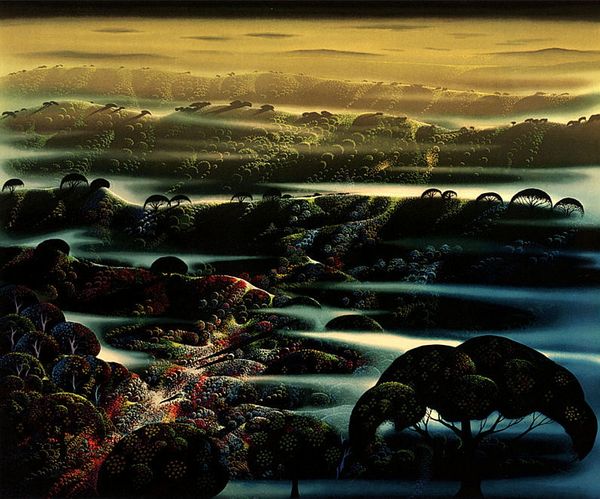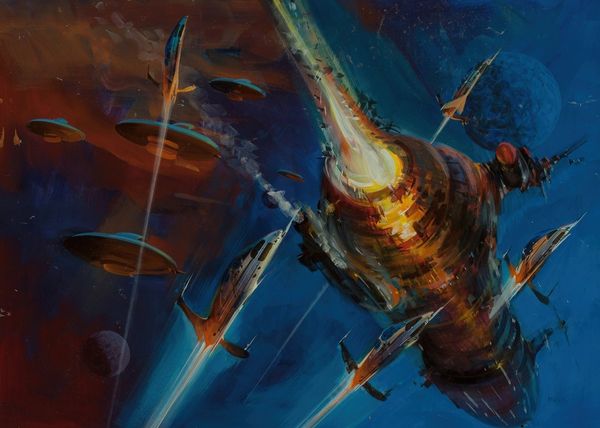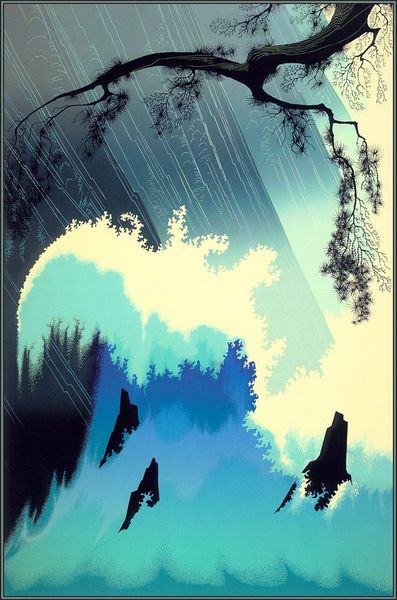
painting, acrylic-paint
#
contemporary
#
organic
#
abstract painting
#
painting
#
landscape
#
acrylic-paint
#
figuration
#
naive art
#
water
#
abstract art
Copyright: Eyvind Earle,Fair Use
Editor: Here we have Eyvind Earle's "Coastal Magic," painted in 1993. It's an acrylic painting, and what strikes me most is the dramatic contrast between the luminous sky and the imposing, almost brooding, mountainside. It evokes a sense of awe and perhaps a bit of mystery. What do you see in this piece? Curator: It's fascinating how Earle combines elements of realism and abstraction, creating a heightened, almost theatrical landscape. This approach challenges our traditional notions of landscape painting, which, throughout art history, served varying functions from glorifying landowners to celebrating national identity. Considering the period in which Earle was creating this, the late 20th century, what role might these types of popularized landscape paintings have played? Is it pure aesthetic enjoyment, or something else? Editor: Hmm, perhaps an escape? Or maybe a way to reconnect with nature in an increasingly urbanized world. Curator: Precisely. This speaks to a specific societal need—a hunger for idealized, almost fantastical natural scenes. Notice how the "naive art" style flattens perspective and enhances decorative patterns, moving away from true representation. This "naive" approach, if adopted knowingly and marketed well, plays a vital role in shaping what's consumed by the art market. Consider also the way in which imagery can convey values or narratives, often subtle ones, reflecting broader social and cultural trends. Do you see elements of past landscape painting traditions here? Editor: Yes, in the sense that it presents an idealized view of nature. But, it’s so stylized, it feels like a dreamscape more than reality. Curator: And that is precisely the intention, to create art as both object and symbol, designed to elicit both feelings and to function decoratively. I wonder how museums will position pieces such as this as contemporary tastes continue to change? Editor: This has made me consider the power of art, particularly landscapes, to reflect and even shape our desires and understanding of the world around us. Thank you! Curator: A worthwhile reflection; the ongoing dialogue is essential.
Comments
No comments
Be the first to comment and join the conversation on the ultimate creative platform.
